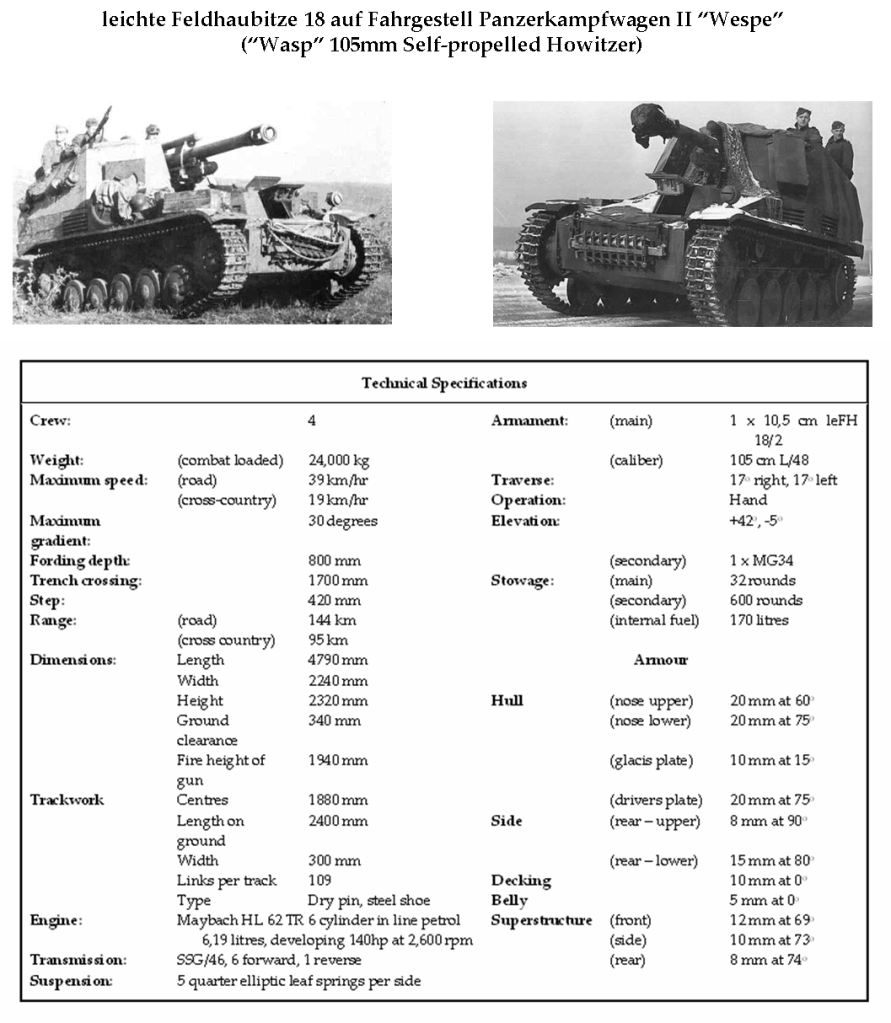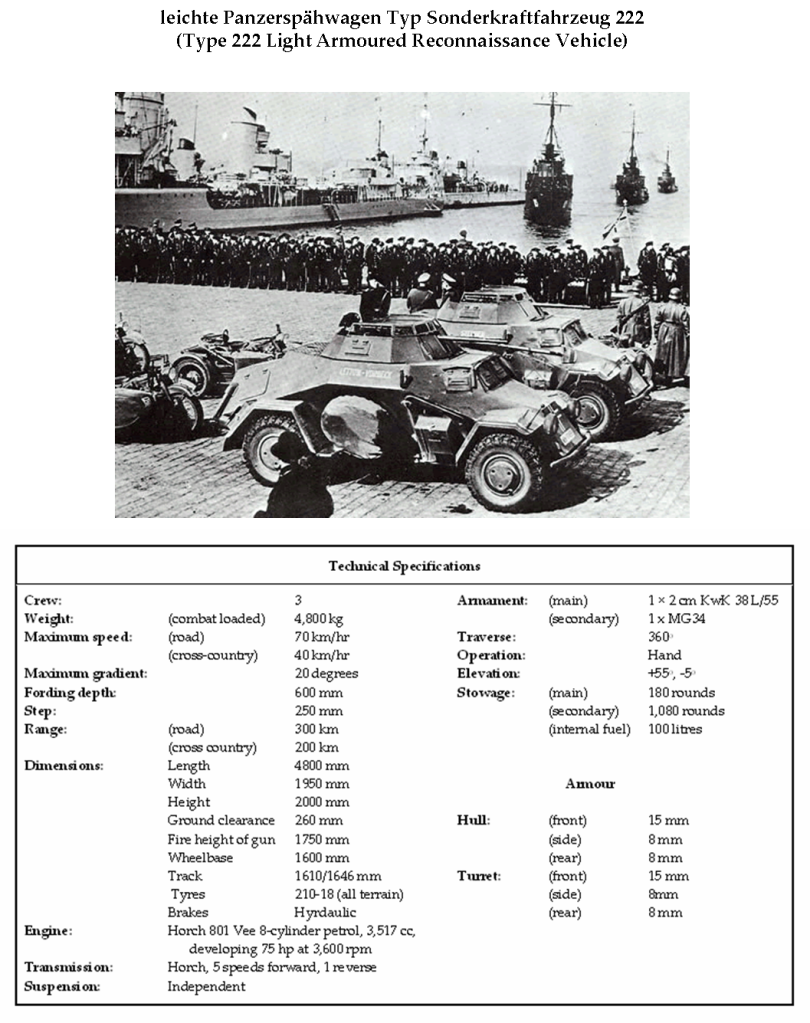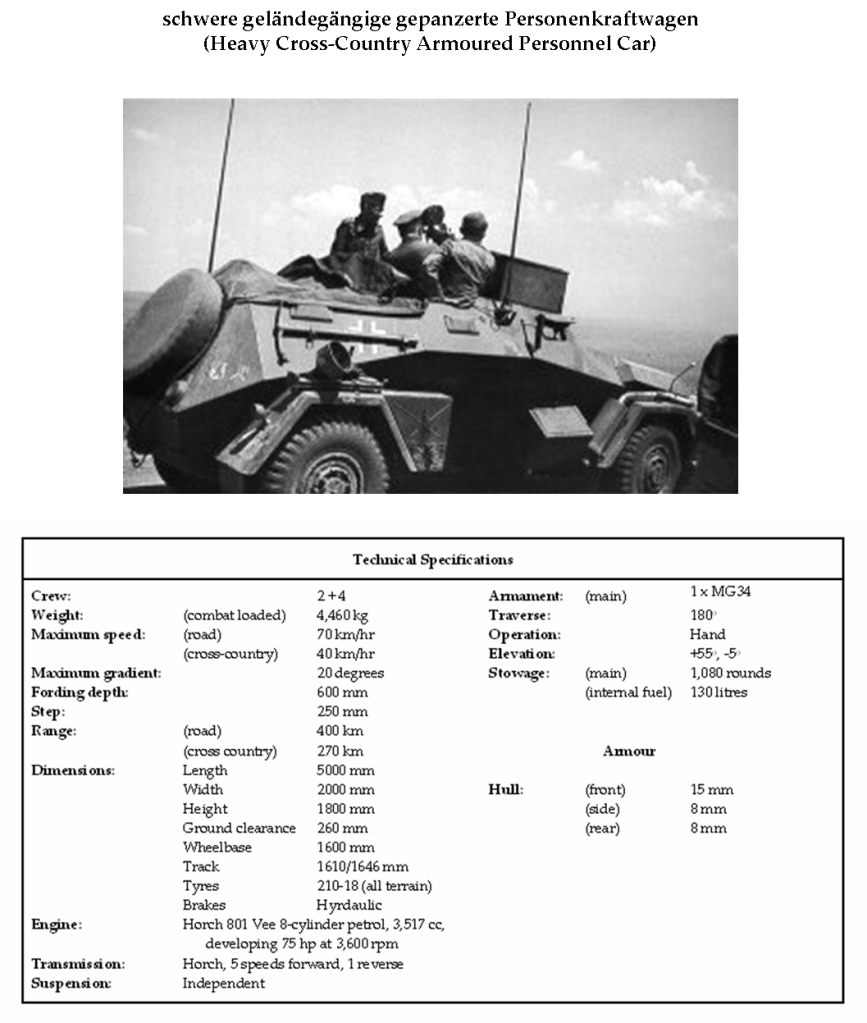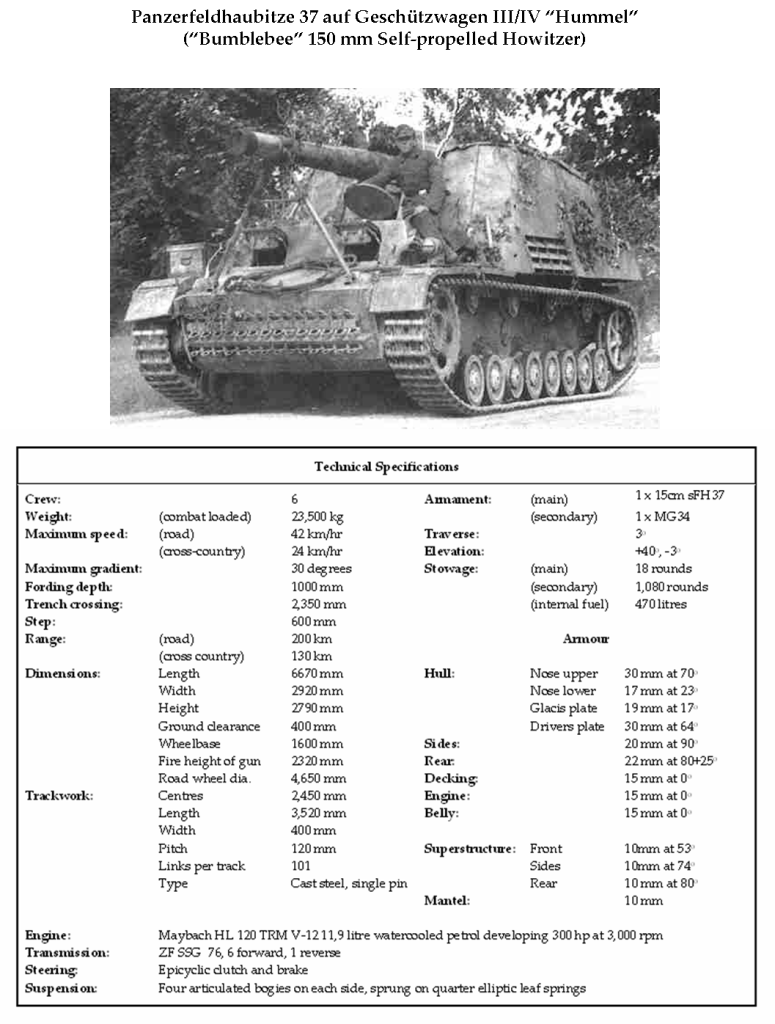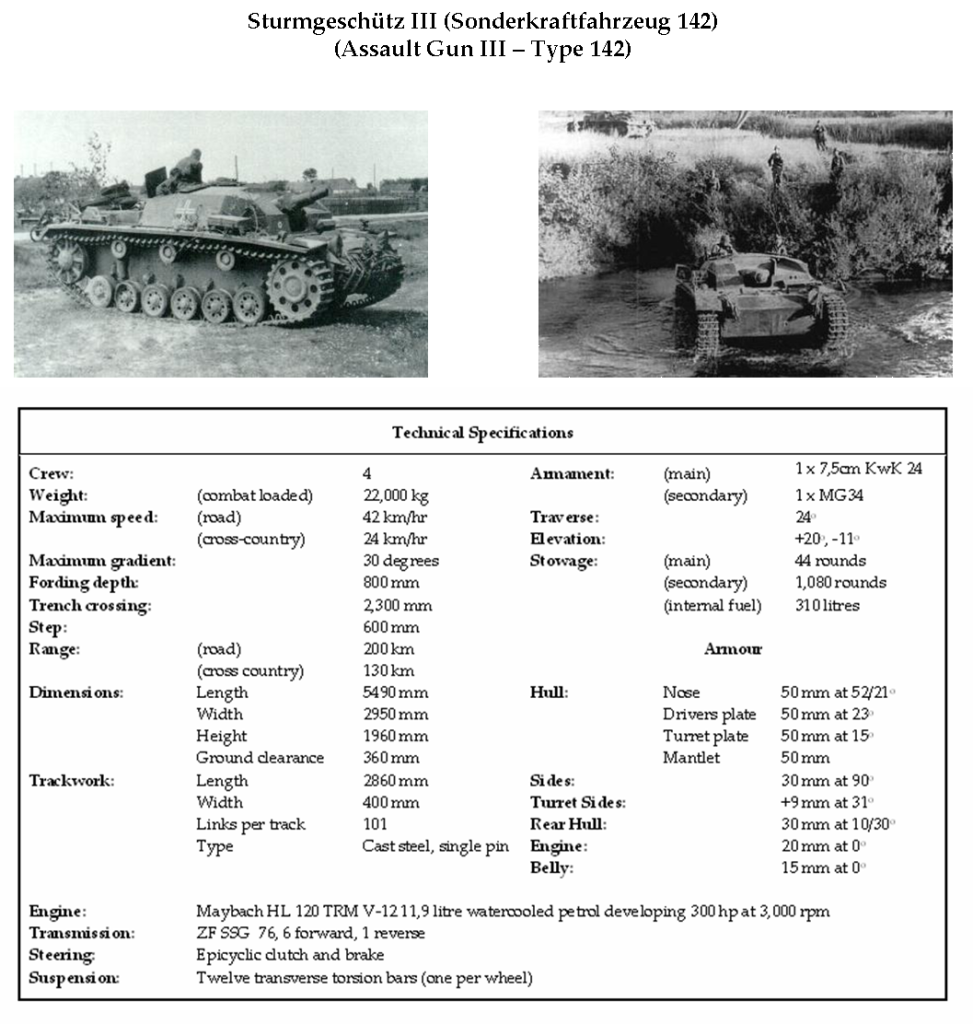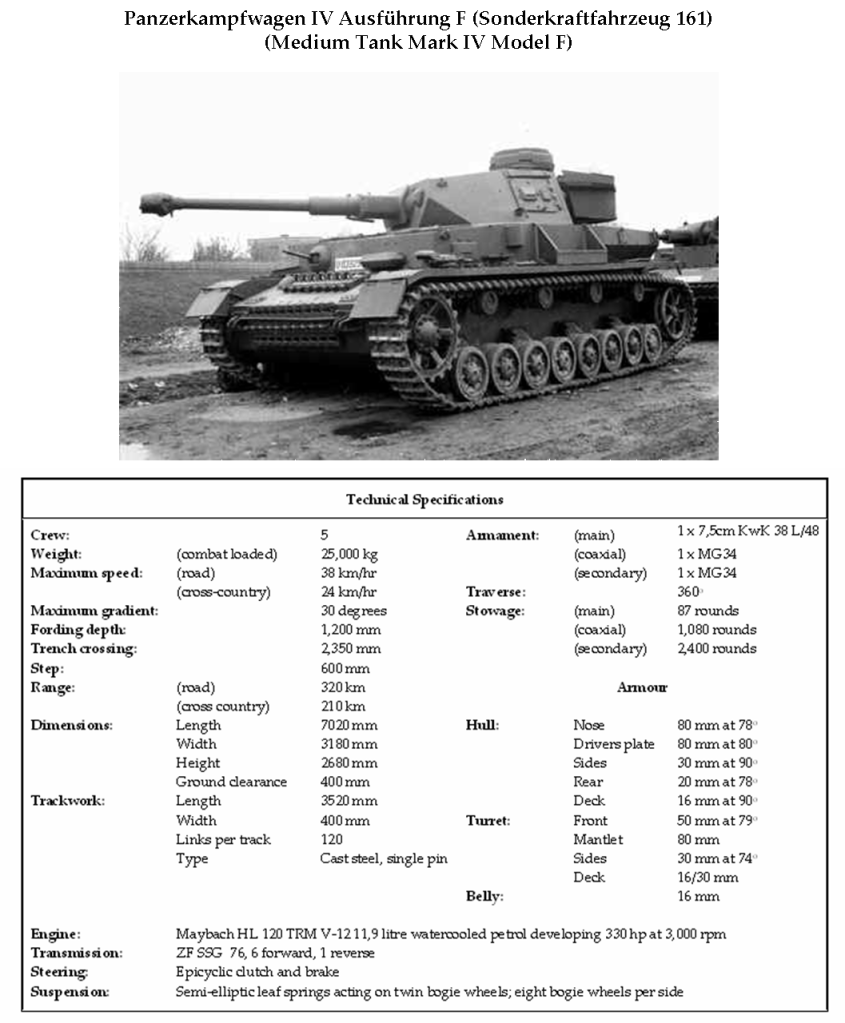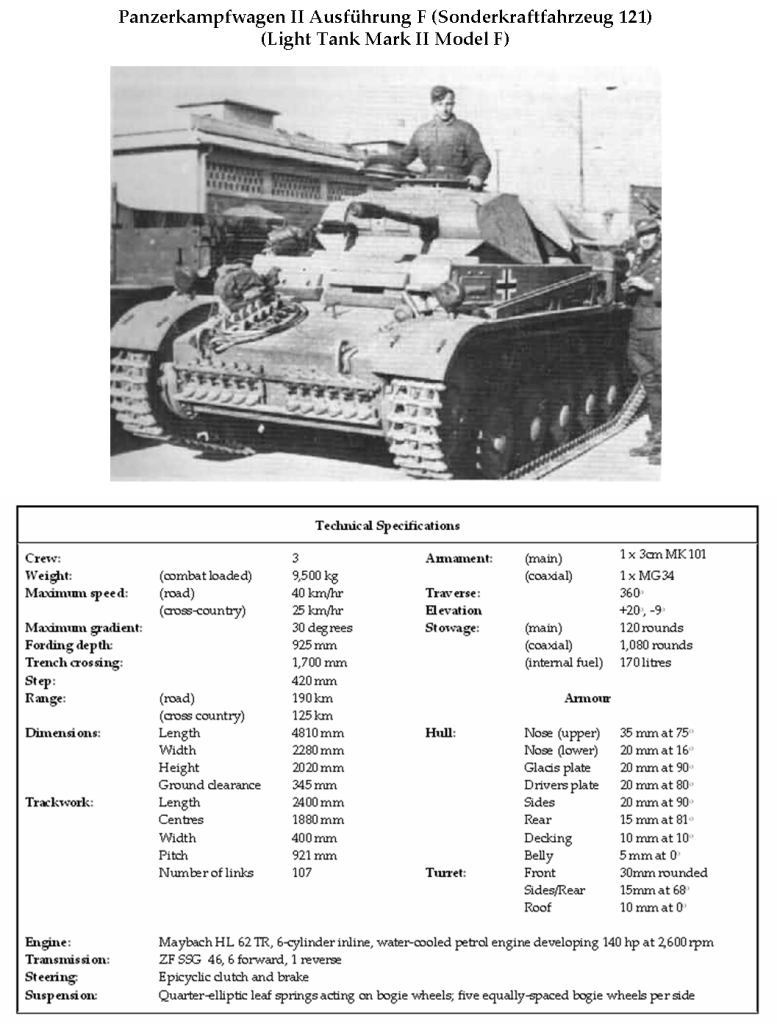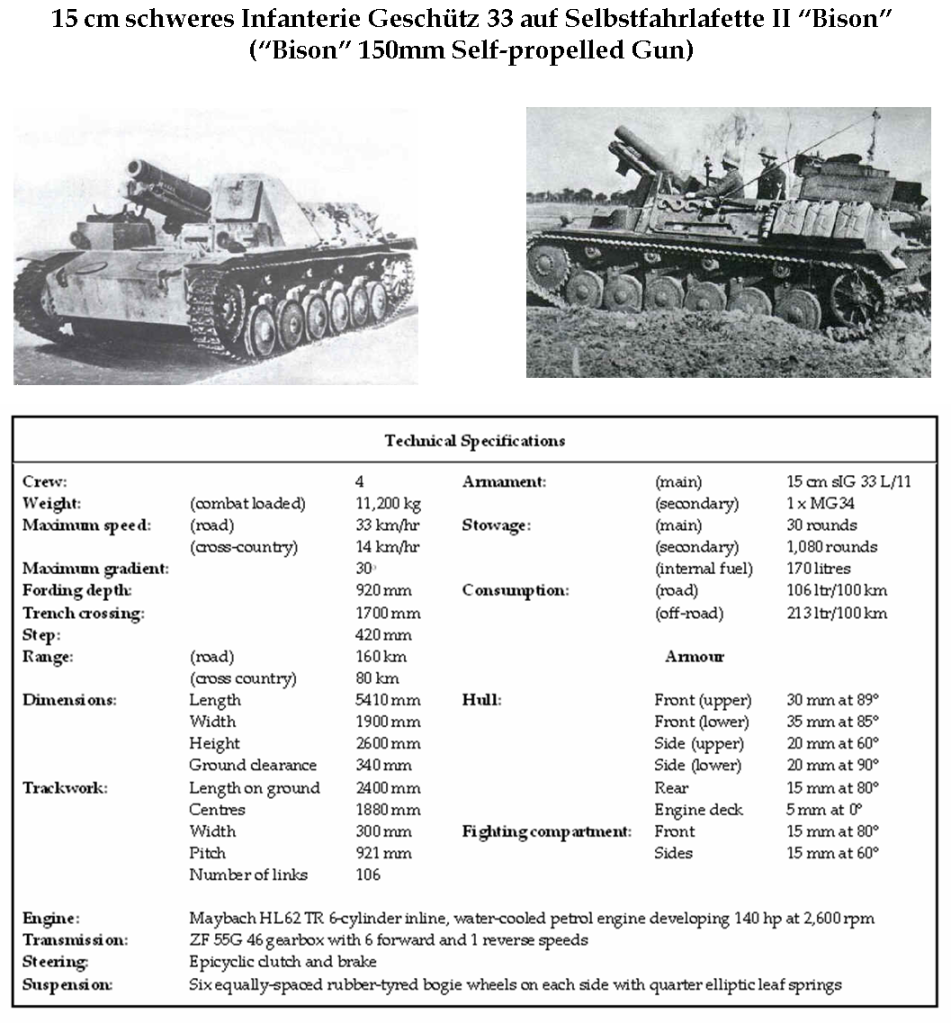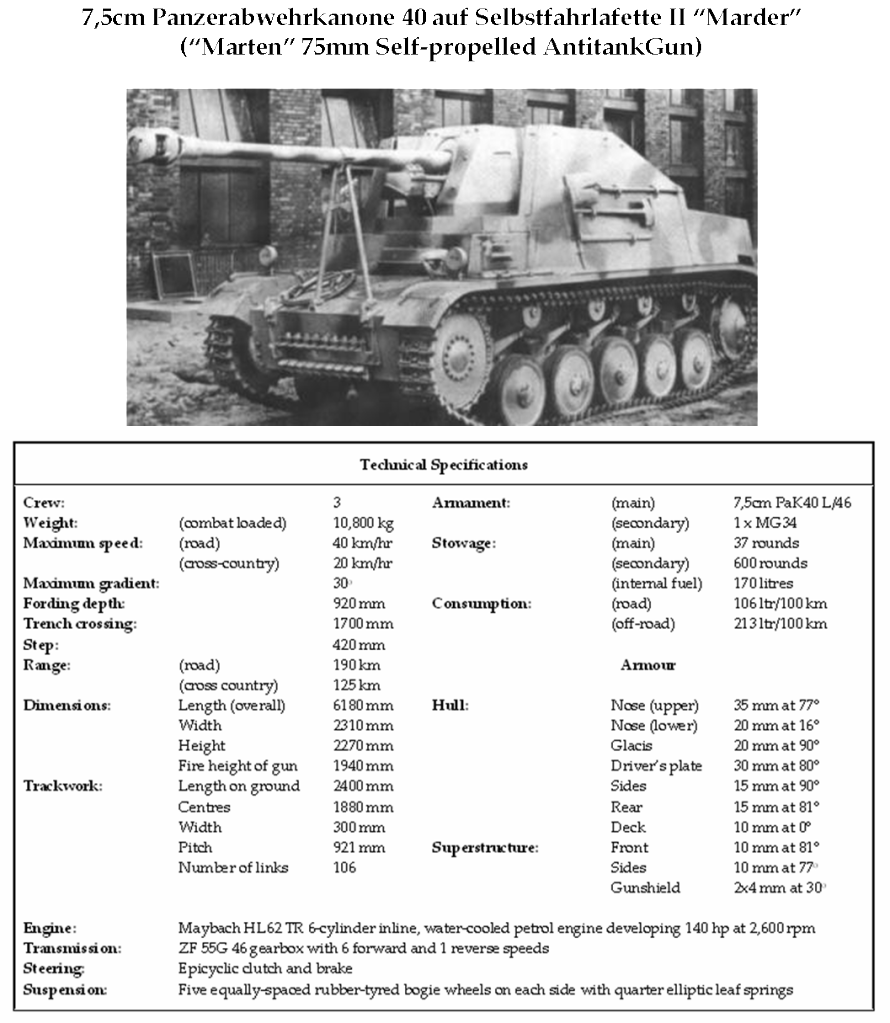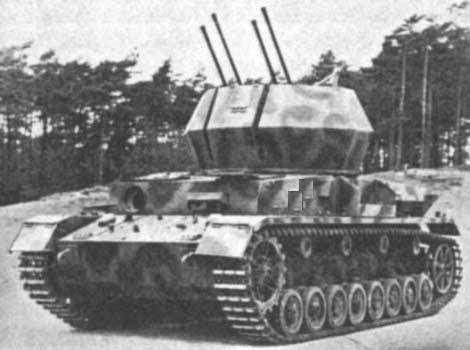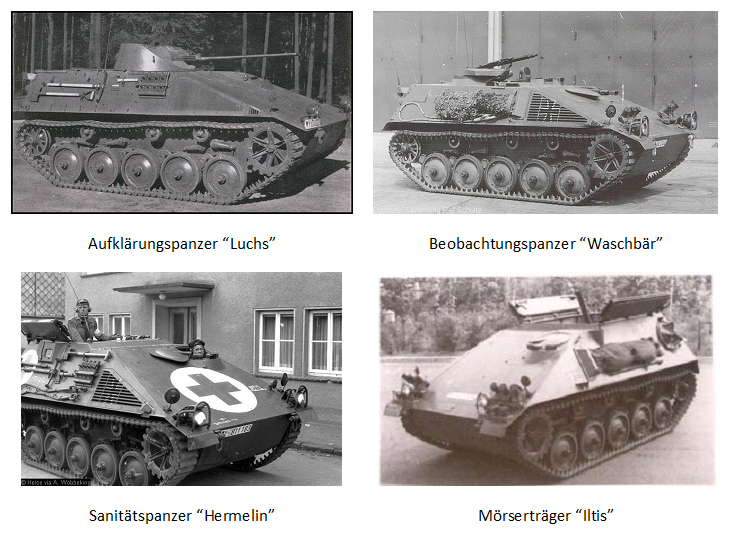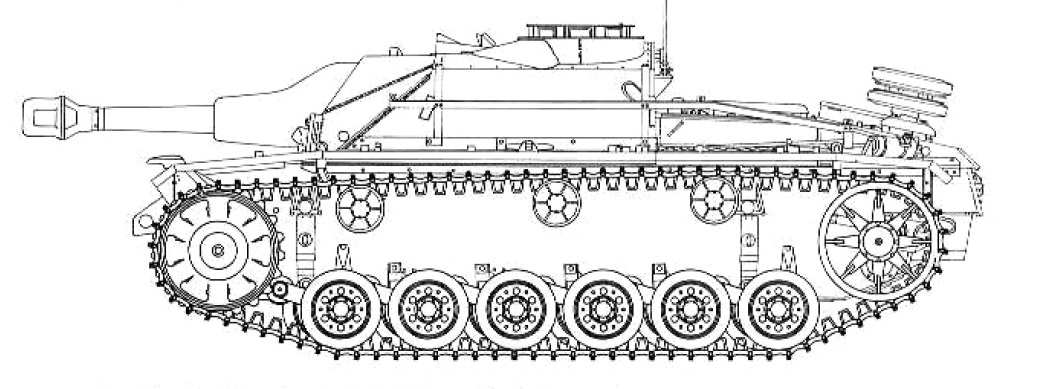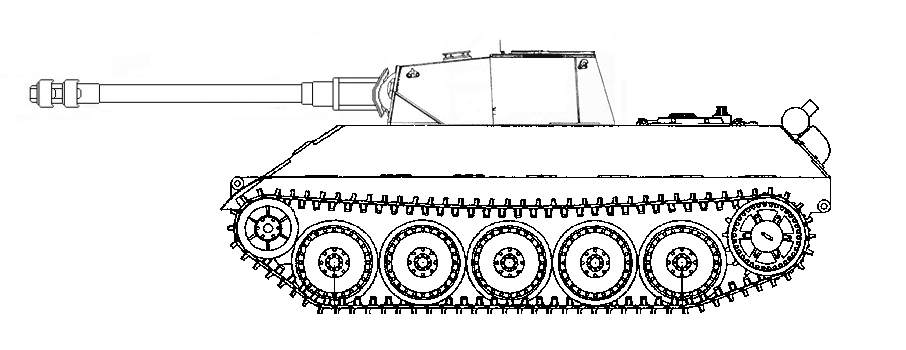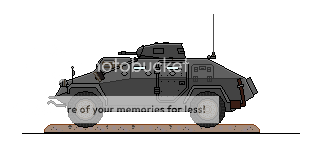Combat weight: 8,400 kg
Length: 4.47 metres
Width: 2.34 metres
Height: 2.02 metres (without antenna)
Suspension: Torsion bar, with five road wheels, three return rollers
Armour: Hull forward: 20 mm at 62°; Hull other: 10 mm; Turret: 15 mm
Engine: Deutz 6-cylinder diesel, 165 hp, located at front
Speed: 55 kph (forward), 25 kph (reverse)
Operational radius: 390 kilometres (road)
Fuel capacity: 390 litres
Fording depth: 0.7 metres
Maximum step: 0.60 metres
Trench crossing ability: 1.50 metres
Crew: Varies according to role. Normal reconnaissance variant has a crew of five – commander in the turret, driver, radio operator, and two scouts
Armament: 20mm automatic cannon (MG151/20 L/55) in the turret with 500 rounds of ammunition. Personal weapons include pistol (commander), two machine pistols (driver and radio operator) and two rifles (scouts)
Development
In late 1943 the Heer formulated staff requirements for a fully-tracked light armoured vehicle to replace its SdKfz 222 series of light armoured cars and certain SdKfz 251 series half-track vehicles employed in reconnaissance roles. Following submissions by industry the design proposed Altmärkische Kettenwerke of Berlin-Borsigwalde was selected for further development and testing. The first pre-production vehicles were delivered late in the autumn of 1944 and were followed by the first production vehicles in January 1945.
Known as the
Aufklärungspanzer Luchs (Reconnaissance Tank Lynx) the first vehicles were delivered to the troops in the late winter of 1945, and production was built up rapidly to meet the requirement of the Heer. The basic chassis has been adapted for a variety of specialist roles, including:
Beobachtungspanzer “Waschbär” – an armoured observation post for the artillery; fitted with additional telescopes, a rangefinder, and additional radio equipment
Mörserträger “Iltis” – an armoured carried for the 81mm trench mortar, used to support reconnaissance units with smoke and suppressive fire for disengagement
Sanitätspanzer “Hermelin” – an armoured ambulance employed in relatively small numbers; unarmed and fitted to transport up to two stretcher cases
Alkett has proposed the design of a dedicated munitions and supply vehicle on the Luchs chassis; to date this variant has not been adopted by the Heer.
The Ejército de Chile has acquired a quantity of one hundred Luchs vehicles as the M46 “Lince” for use by its armoured cavalry regiments.
Altogether no fewer than five factories are engaged in the production of the type, including Alkett’s works at Berlin-Borsigwalde and Berlin-Tegel, the Weserhütte at Bad Oeynhausen, Mechanische Werke Cottbus, and Büssing-NAG at Berlin-Oberschöneweide. Production is presently in excess of two hundred vehicles per month.
